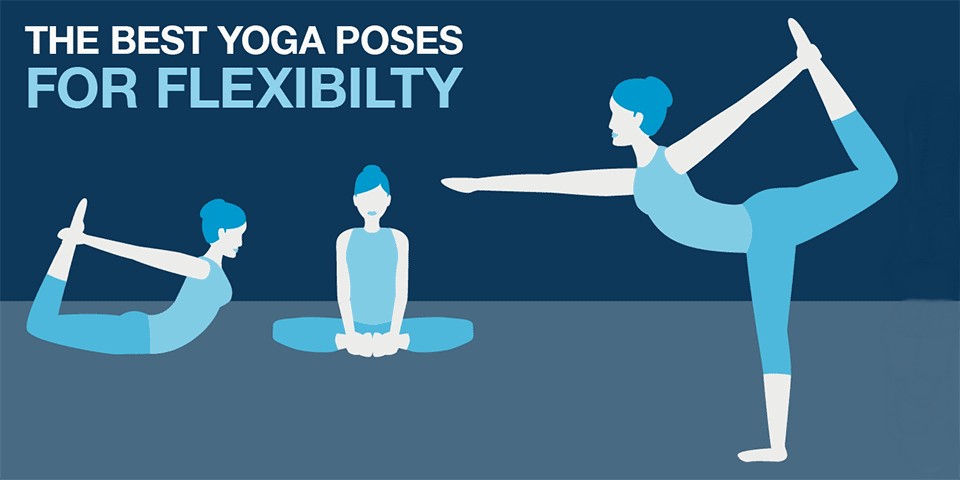Fluidity and flexibility are two important qualities your body should have to function to its full capacity. A good stretch from time to time gives your back an increased range of motion and prevents injury. Visiting your local physician or chiropractor can make you spend a lot and the treatment only offers a temporary relief. You should include yoga into your daily routine to provide strength to your back and keep its flexibility intact.
Practicing the right yoga poses improves your posture and also gives relief from back pain. You can enroll in a Yoga Alliance Certification to learn in-depth about how yoga can help you keep your back healthy. Read further to know what yoga asanas you should practice to keep your back flexible and healthy.
4 Yoga Poses To Have A Healthy and Flexible Back
Learning in yoga is something that never stops.
Whether you are a complete beginner or someone with a little bit of experience, given below are four yoga poses to keep your back healthy and flexible.
1. Parighasana (Gate Pose)
Gate Pose stretches and strengthens your abdominal muscles and spine. It also helps open up your shoulders. The lateral movement in this yoga asana provides your spine with flexibility and stretches the sides of the torso.
Steps To Practice Gate Pose
- Kneel on the yoga mat. Bring your tailbone under and engage your abdominal muscles.
- Extend your right foot out to the sides. Keep your toes facing forward.
- Press your feet further in the yoga mat. Keep your kneecap facing the ceiling.
- Bring your arms to form a T shape with palms facing down. Slide your right hand under the right leg and rest it on your shin.
- Bring your left arm over your ear.
- Move your shoulders away from your ears and expand your chest facing the ceiling.
- Inhale five deep breaths. Repeat on the other side.
2. Paschimottasana (Seated Forward Bend)
One of the asanas you will learn during the 200 hour yoga teacher training in Rishikesh is the Seated Forward Bend. This yoga asana gives your back a good stretch from the neck to your heels.
Steps To Practice Paschimottasana
- Come down on the yoga mat in a seated position.
- Sit with your legs extended forward. Flex and spread your toes.
- Press the back of your thighs into the yoga mat.
- Sweep your arms overhead to elongate your spine.
- Bend forward hinging from the hips. Do not round your spine.
- Let your palms rest till you feel a slight stretch.
- Hold this position for 10 deep breaths.
3. Supta Matsyendrasana (Supine Spinal Twist)
The Supine Spinal Twist stretches and relaxes your spine.
Steps To Practice Supine Spinal Twist
- Lie down on the yoga mat. Keep your feet flat.
- Form a T shape with your arms with palms facing down.
- Keep your knees bent. Move both your legs from left to right.
- Touch the backside of both shoulders to the yoga mat.
- You can now turn your gaze to the left side.
- Hold this position for five deep breaths. Engage your core and change sides.
4. Adho Mukha Svanasana (Downward-Facing Dog)
Downward Facing Dog yoga asana gives your arms, legs, and back a good stretch. It is a good yoga pose to develop solid bone density that comes in handy as you age.
Steps To Practice Adho Mukha Svanasana
- Get into a tabletop position on the yoga mat. Your back should form the table and hands and legs should form the legs of the table.
- From the tabletop position, bring your hands forward.
- Keep your toes tucked under. Press into the palms and lift your knees off the mat. Form an upside V shape with your body in this position.
- Try bringing your hips and thighs back.
- Move your upper body forward while keeping your lower ribs together.
- Keep your spine long. Bend your knees and avoid touching your heels to the yoga mat.
- Hold this position and take up to 10 deep breaths.
Conclusion
Back pain is a painful condition that can impact your body’s functioning at any age despite your profession or level of fitness. However, you can enroll in a Yoga Alliance certification to learn in-depth about how yoga can help you keep the back muscles flexible and healthy.
